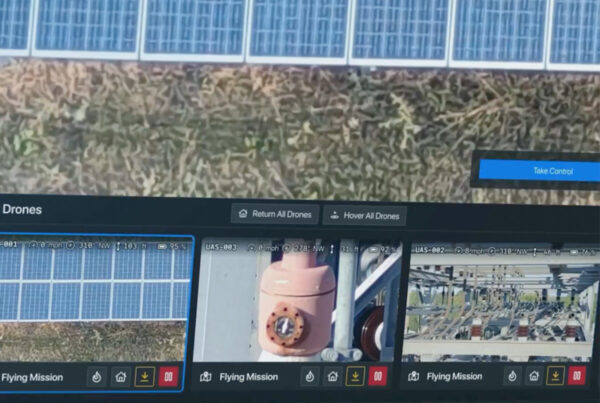

Paul McRoberts is President of Atonix Digital
I’m not here to sell you on asset performance management (APM)—plenty of blog posts and thought pieces already exist for that purpose. I’m here to shed light on the challenges facing asset-heavy operations and why now is the perfect time to re-evaluate your asset management approach.
What is APM?
Let’s start by explaining what APM is. According to Gartner, APM encompasses the capabilities of data capture, integration, visualization and analytics tied together for the explicit purpose of improving the reliability and availability of physical assets. It includes the concepts of condition monitoring, predictive forecasting and reliability-centered maintenance (RCM). Because it leverages these various technologies and concepts to create a real-time, 360-degree snapshot of an operation, APM is well positioned to address the challenges and issues confronting today’s asset-intensive infrastructures.
Warning: Your Infrastructure is Under Attack
There are many factors that could be “attacking” your infrastructure, such as data explosion, increased market competition, renewable energy investments and changing organizational drivers. Let’s dive deeper.
Data Explosion
The Industrial Internet of Things (IIoT) is here, and it’s brought a ton of data for us to play with. The EIA has estimated that over 1.5 billion connected devices will be deployed by utilities providers by the year 2020. That’s a lot of assets and, more critically, that’s a lot of data. This influx of data from every corner of our infrastructures gives a ton of opportunities to meet every one of stakeholders’ demands. Whether the directive is to streamline operations, reduce overhead, decrease headcount, increase ROI—if you can conceive it, odds are our data can empower it. As long as we have a means of collecting, analyzing and making use of that data.
Increased Market Competition
The introduction of solutions like AI and the cloud have made it easier for companies to disrupt the marketplace. Fifteen years ago, these technologies were only available to big enterprises with deep pockets. Today, they’re universally available, giving previously underserved companies the technical capabilities and data access to compete with enterprises. With innovative technology so readily available, if your team isn’t looking for ways to become more innovative, efficient and cost-effective, you risk falling behind in the marketplace.
Renewable Energy Investments
More investment has been made in renewable energy than at any other time in history. As a result, alternative sources like wind, solar and hydropower have entered the market alongside incumbents like coal and fossil fuels—plants may generate power from a variety of different sources.
More power sources can create an asset management nightmare, especially when stakeholders need broad visibility and hyper-specific data points to make operational decisions.
Changing Organizational Drivers
According to Scott Smith, in Deloitte’s 2019 power and utilities industry outlook, utilities companies, in particular, are focusing more on driving revenue and delighting the end-user, investments that take shape in the form of user-facing products like installation services and energy-tracking apps. This trend illustrates a more universal pattern across the marketplace where companies are increasingly being asked to “do more with less,” streamlining operations and driving performance and revenue without introducing greater risk.
Are Legacy Systems Now a Liability?
Now you might be thinking, “Hmm. Streamlining operations without introducing risk seem like contradictory objectives.” You’re right—if you’re using yesterday’s technology.
In the Utility Analytics Institute’s 2018 State of the Market: Trends in the Use of Utility Analytics report, it was found that over half of utilities companies are struggling with aging infrastructure. Another study from ARC Advisory Group discovered that, among 365 surveyed engineers and operations leaders, most still employ a calendar-based maintenance approach to managing infrastructure—essentially deferring to manufacturer guidelines when it comes to asset maintenance and optimization.
We’re all familiar with computerized maintenance management (CMMS) or enterprise asset management (EAM) systems, solutions that are excellent at mobilizing a workforce after a failure or outage occurs. Unfortunately, in the high-pressure landscape I’ve just outlined, this reactionary model is unsustainable. Instead of seeing an alarm and dispatching a maintenance technician to fix an individual asset, greater emphasis is now being placed on preventing and predicting asset failures and outages. The latter requires data and lots of it. It also requires the upstream/downstream visibility to look at that data as a complete picture that can inform decisions today and tomorrow.
This need for a more holistic, predictive asset management model is what has given rise to APM. The good news is, thanks to technology advancement, APM solutions are no longer reserved for big enterprises, a topic I explored in a recent blog post. Public cloud offerings like Microsoft Azure and Amazon Web Services have enabled smaller APM providers to enter the market and compete with the GEs, Schneiders, and IBMs of the world. This competition gives teams at small- and mid-sized companies the opportunity to experience the full benefits:
- Efficient collection of asset data across distributed infrastructure
- Centralizing real-time asset data behind a single pane of glass
- Immortalizing operations procedures, responses and maintenance activities in the cloud
- Faster, more holistic monitoring and diagnostic practices
- Increased ROI from operations
- Ability to forecast asset performance to prevent unplanned outages
APM—No Longer Just an Acronym
Time will tell how the market evolves, but it’s safe to say that APM has arrived as a real solution to real business problems. With today’s trends continuing to push legacy asset management systems like CMMS and EAM to their limits, now is the time for opportunistic water, power and utilities organizations to adapt their asset management approach to the modern landscape.
Paul McRoberts is President of Atonix Digital, where he oversees the development and deployment of the company’s suite of software solutions powered by the ASSET360 analytics platform.














